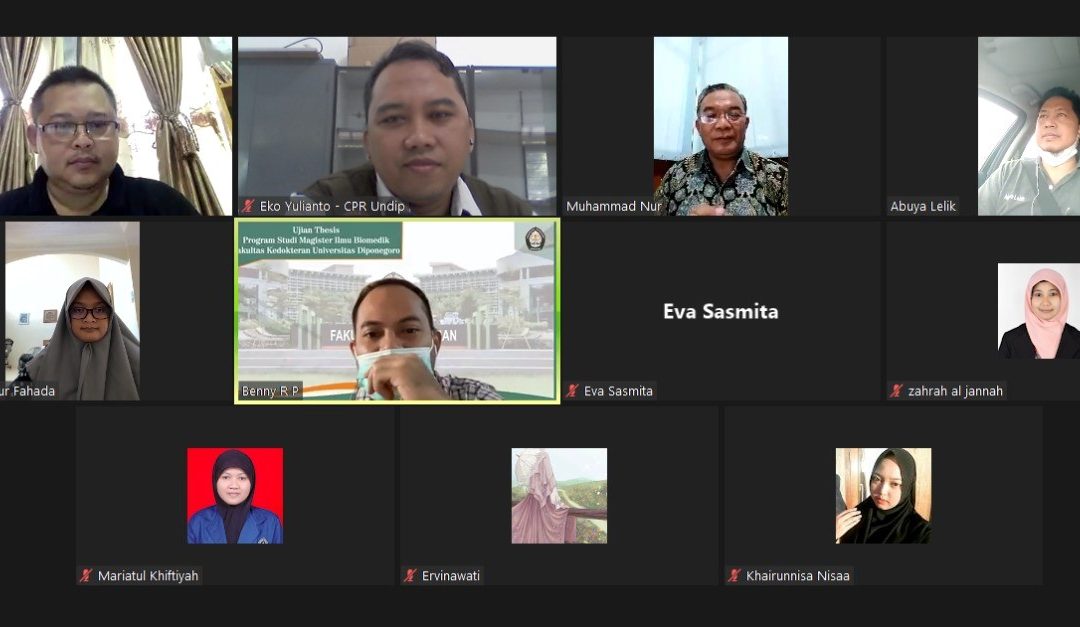Center for Plasma Research, Faculty of Science and Mathematics, Diponegoro University had the opportunity to hold a discussion on ‘Reboan’, which is a scientific discussion on plasma applications which is held every Wednesday. In this Wednesday, December 14, 2022 edition, it specifically invites wound nurse practitioners who are members of the Indonesian Wound Nurses Association (InWCCA). He was pleased to attend, Mr. Edi Mulyadi as president of InWCCA and also Mr. Abuya Lelik. The trigger for this discussion came from the results of research by Doctor Benny and Doctor Fadhilah who gave good news on the DM wound healing process using ozone ‘bagging’ technology, namely that there has been an acceleration of the DM wound healing process. The acceleration of the healing process is well recorded, macroscopic aspects in the form of closing DM wounds and microscopically in the form of growth factors and cytokeins. The discussion was also attended by several master of physical science students with a concentration in medical physics. It should be noted that this ozone ‘bagging’ technology is the result of technological innovation in the plasma field from the Faculty of Science and Mathematics, Diponegoro University. Even based on the information from Prof. Muhammad Nur, DEA, the inventor, that ozone technology “bagging” using this medical ozone generator is the first and only one in Indonesia. This medical ozone generator has referred to the standards published in the Spanish Madrid Declaration of 2020 by the international scientific committee of ozone therapy. Muhammad Nur hopes that in the future Diponegoro University will lead at the national level and the Asian level, thankfully a medical ozone center will be formed at the Diponegoro University Rsnd Teaching Hospital.
The potential of medical ozone technology as an alternative to help the DM wound healing process received a fairly good response from the president of the Indonesian Wound Nurses Association (InWCCA), Edi Mulyadi. This can support modern wound care. Edi Mulyadi added that this technology will be felt if it synergizes with the Indonesian wound nurses association which already has 22,000 certified wound nurse members from the Ministry of Health. Members of the association are spread across 20 provinces from Sabang to Merauke and there are 416 wound care practice clinics and many more that already have home care services. The current challenge is equitable access to DM wound care services, at least there are still around 30% of cases that are quite difficult to reach. The difficulty of this access coverage is influenced by the mode of transportation, some can only be accessed by motorbikes, or boats and some can even only be reached by foot. Based on these considerations, it is desirable that medical ozone generatos have a portable version so that they are easy to carry everywhere. The same hope was also conveyed by Abuya Lelik, who is also a member of InWCCA. Currently, there has been a kind of shift in wound care services to a home care service model, so inevitably generators must be portable. Edi mulyadi also gave advice, technology will be easily accepted as a support for modern wound care when it meets the criteria of safe, cheap and quality. Currently, there are practitioners who are trying to use an ozone generator for 1.4 million rupiah (the generator does not meet the standards yet), the hope is that medical generators can be around that or less with the advantage of having met the standard. The association is also ready to work together to assist the distribution of generators in the context of market tests and further explore research and use in the field. At least medical ozone generators can be placed on every island in Indonesia, that way the data obtained is increasingly and represents from various regions in Indonesia. Of course, the association will feel more proud to use this technology, especially the work of the country’s own children.
Such was the discussion of “Reboan” this week, with the conversation all “meat”. Hopefully, scientific discussions by reviewing scientific and potential applications can continue to be held. The jargon of plasma technology from Undip for Indonesia and from Undip for the world, will manifest itself. God willing. (ey)

